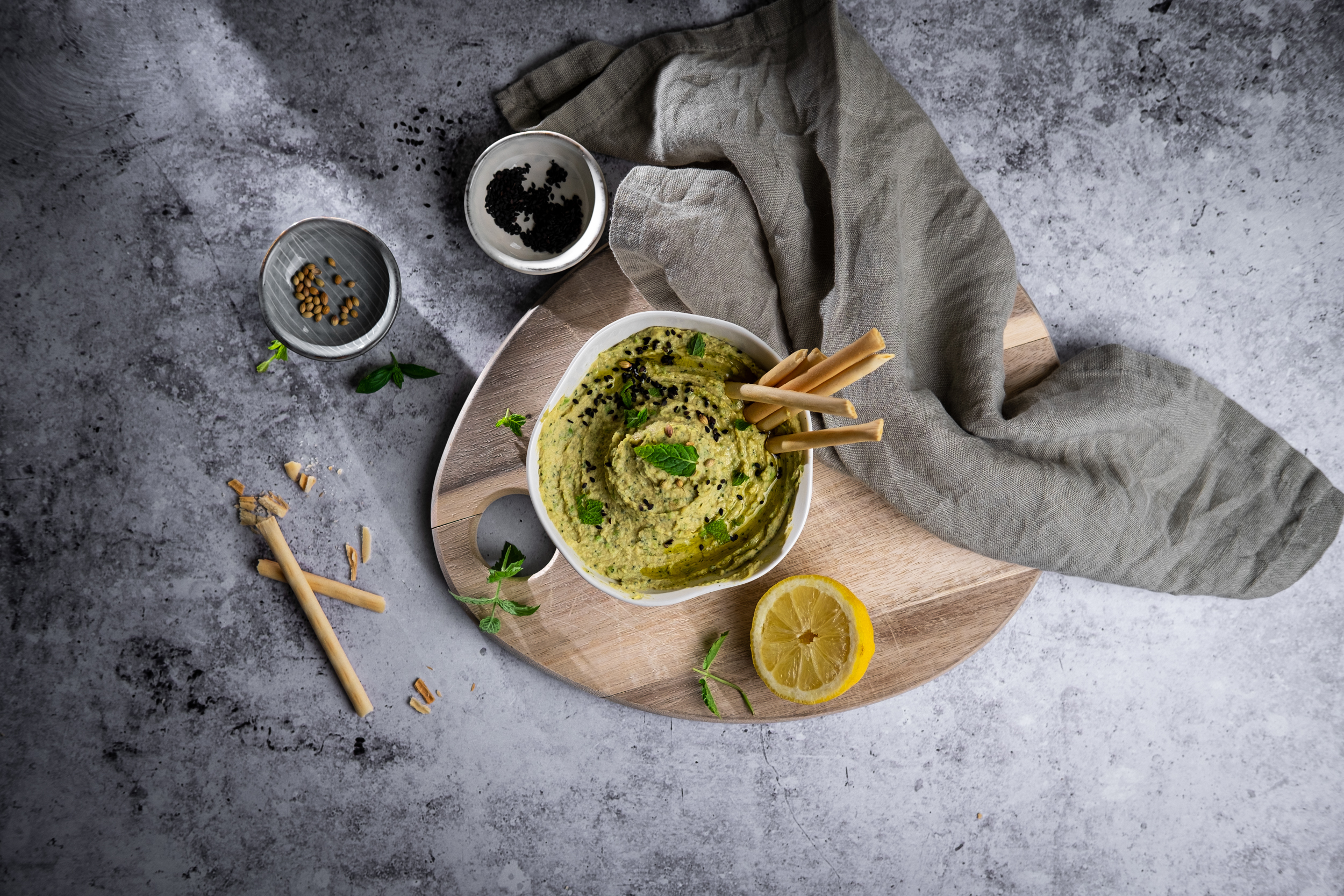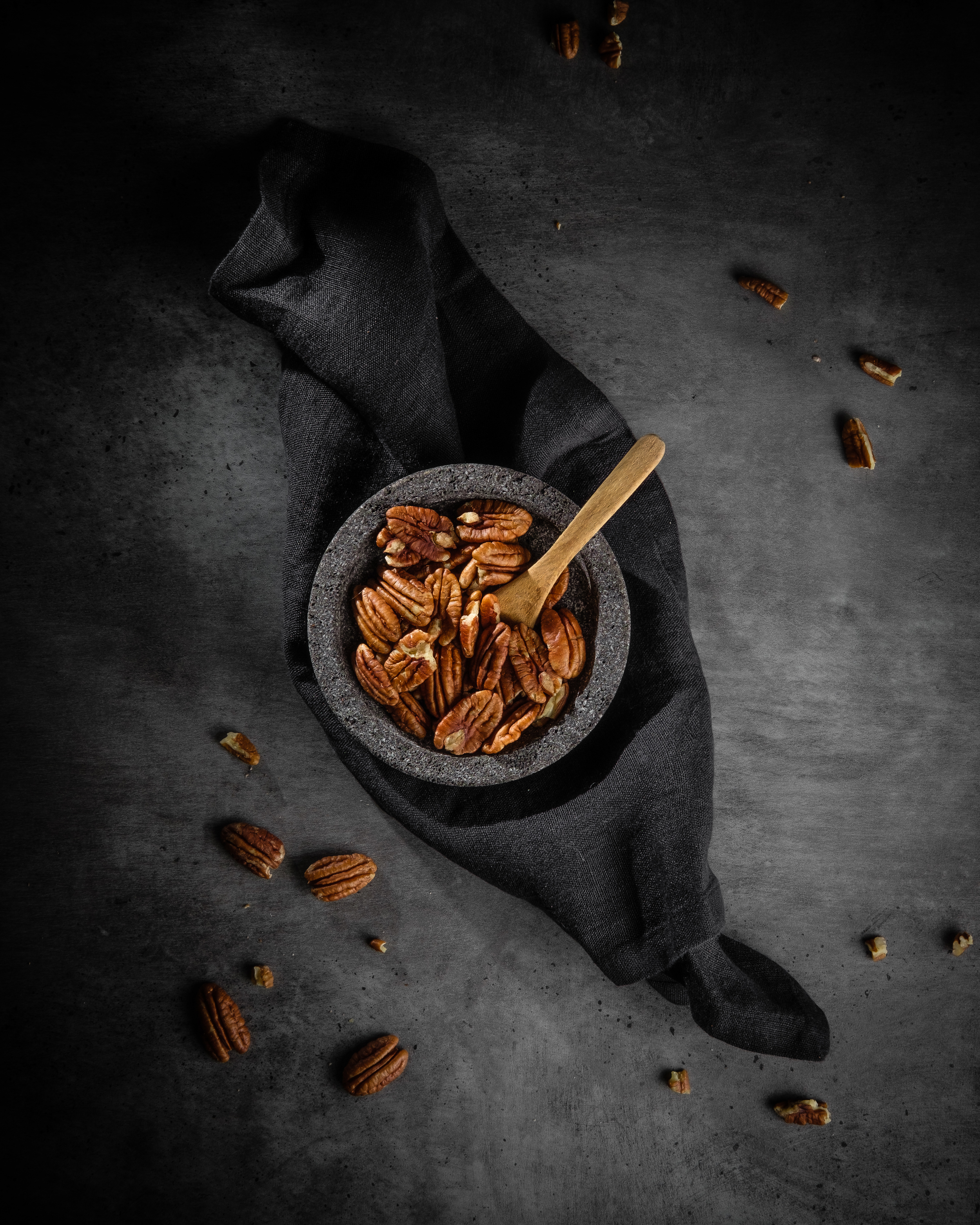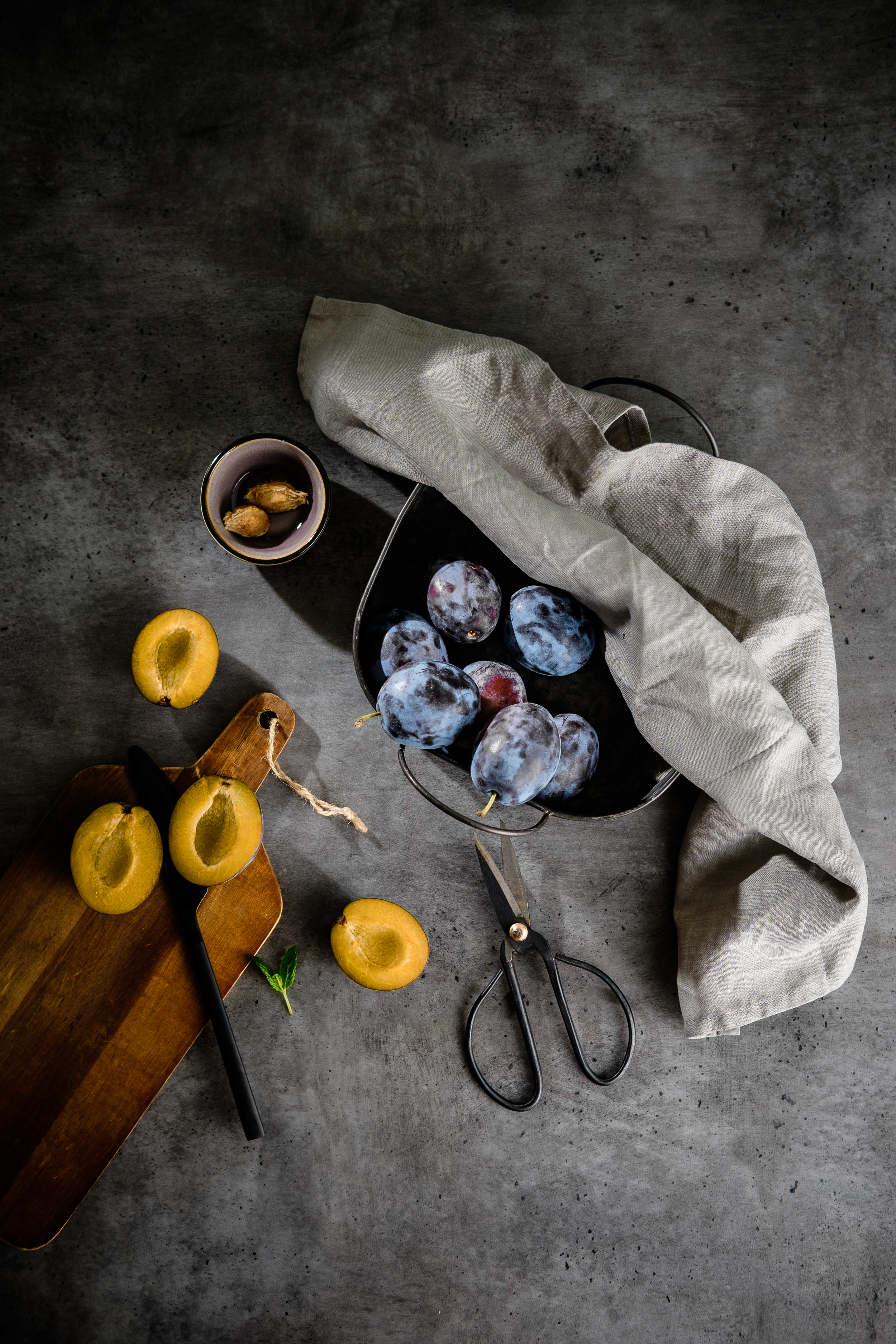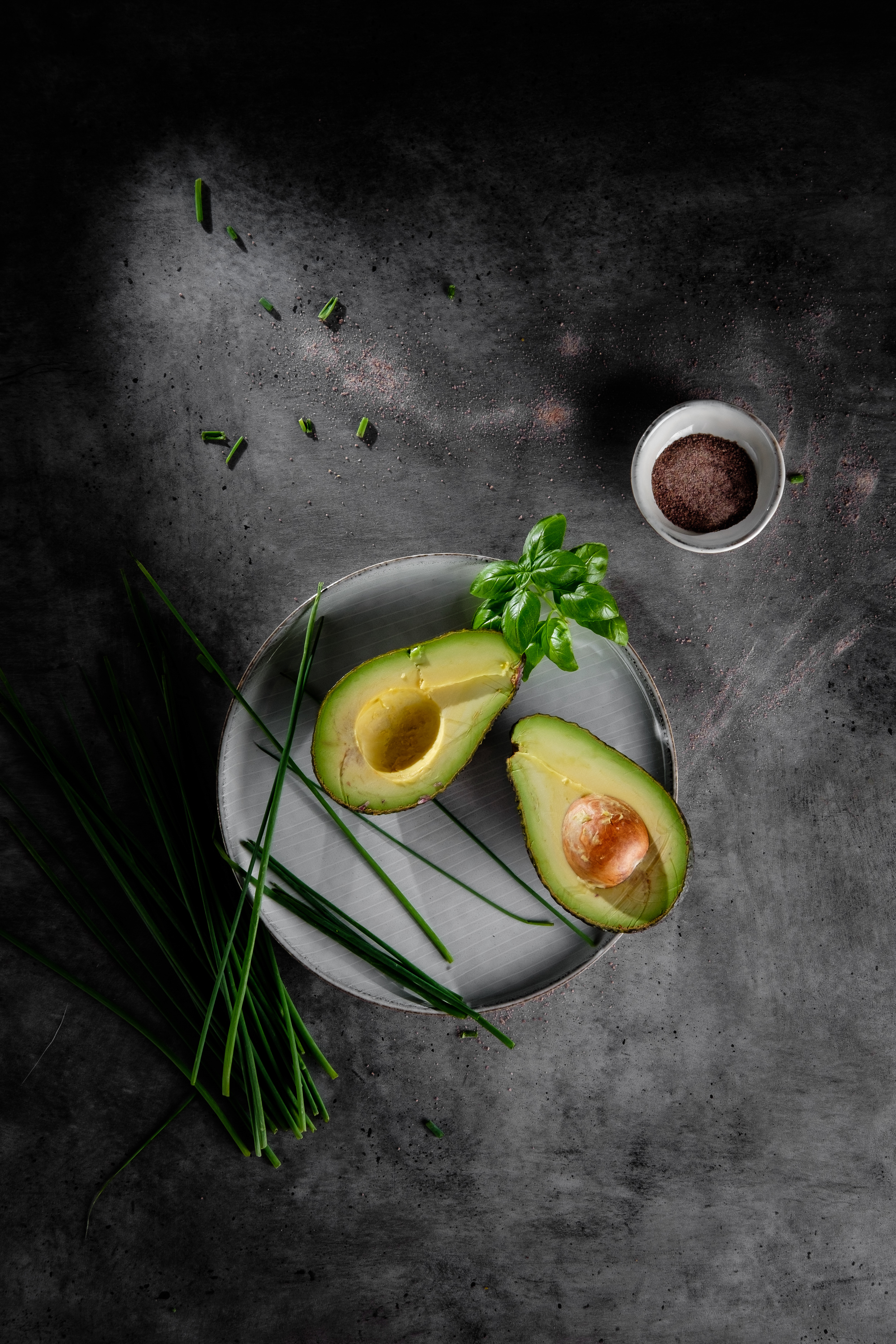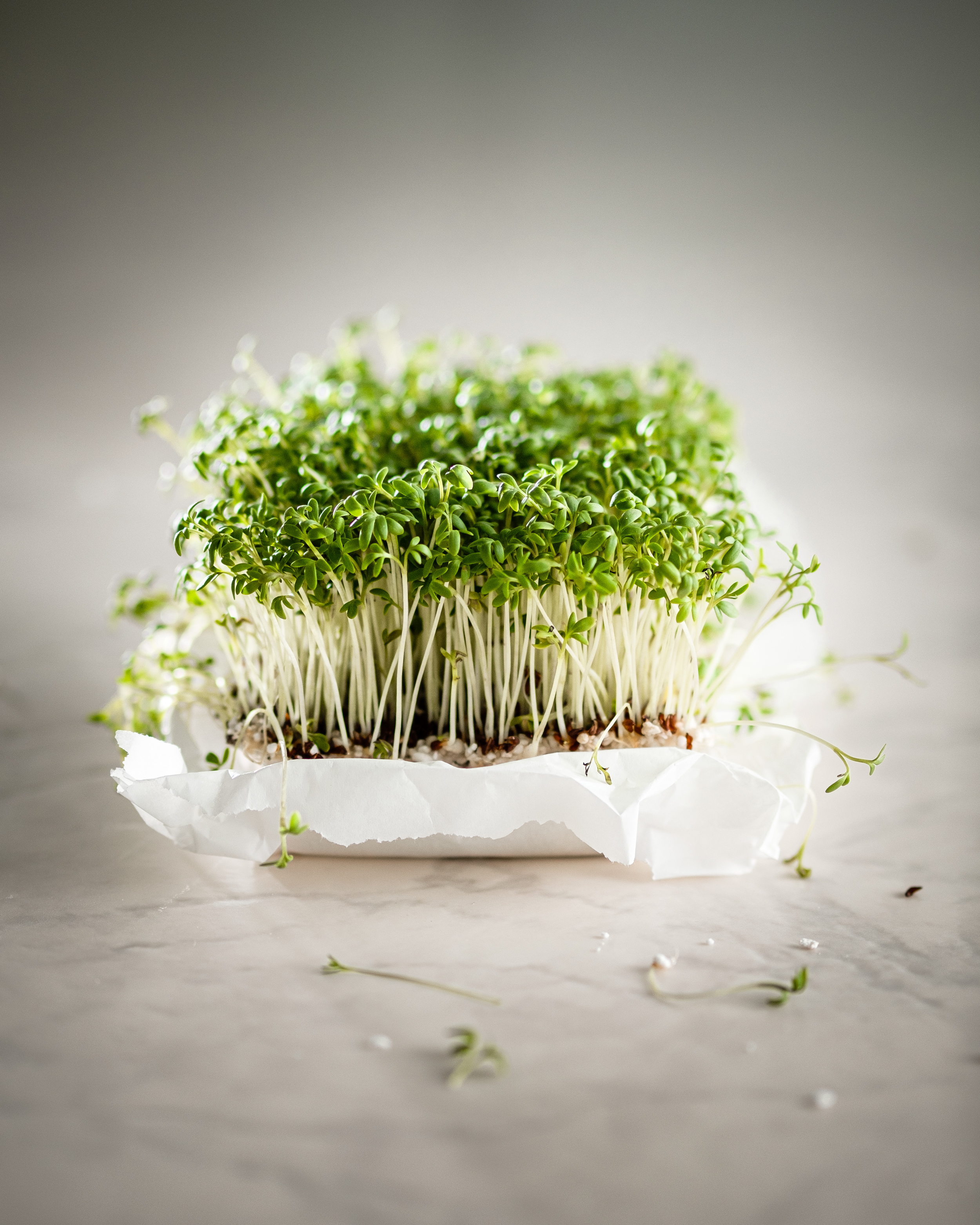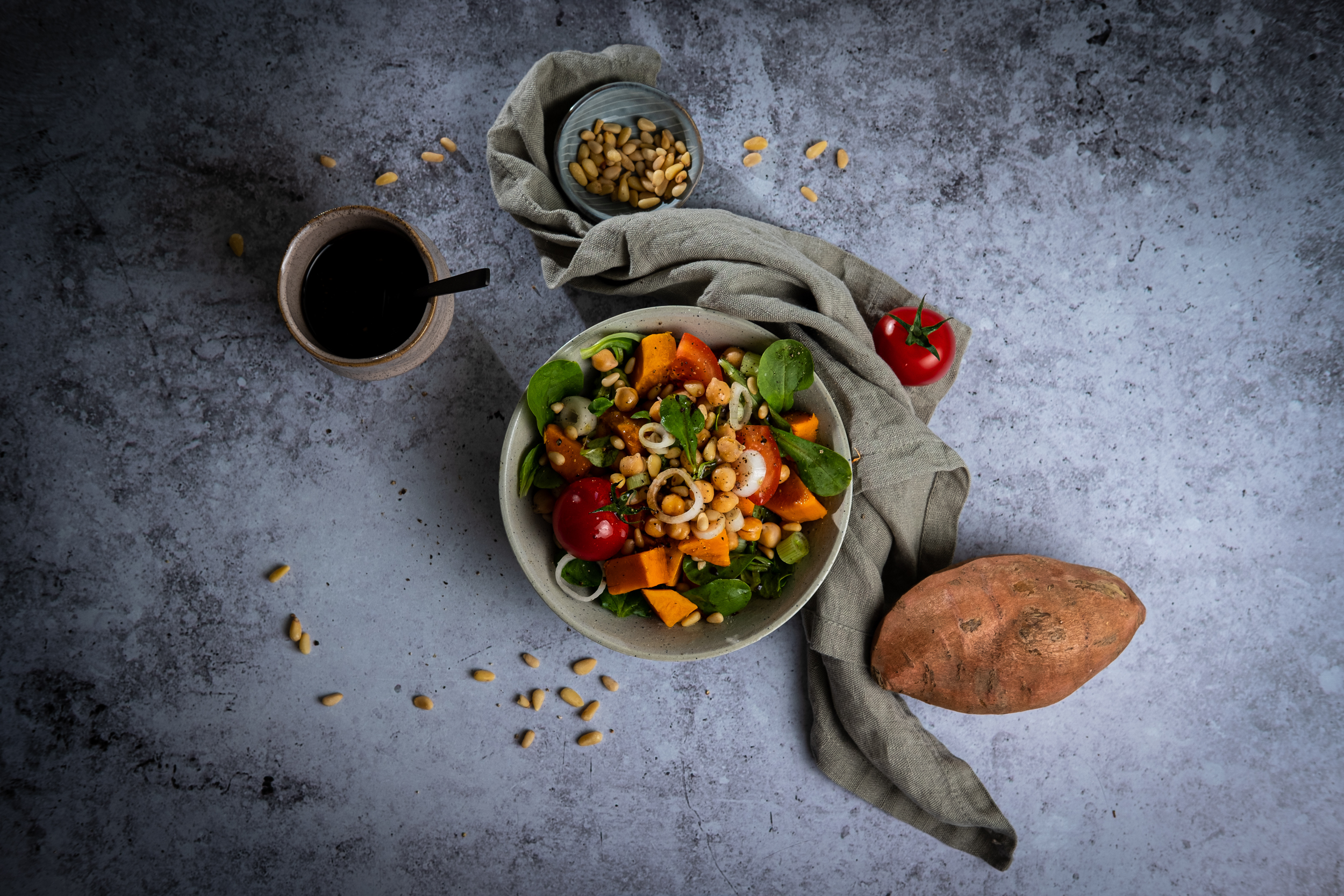When I started with food photography, I often wondered why my own pictures didn’t look like those from the magazines or blogs I liked to read. As I became more familiar with the subject, I realised that other elements besides the obvious factor, the food styling, also make a decisive contribution to a good food photo.
1. Lenses
It turned out for me that the whole process of photographing is much easier if I limit myself to two or three prime lenses. At the moment the XF50mmF2 and XF35mmF2 are my favourite lenses for food photography. I can only advise everyone to spend a certain period of time working intensively with the same lens to learn and internalise what works and what doesn’t with each focal length. I always work with more or less the same setup. This means that my backgrounds are usually 1x2m large and my camera setup (X-T2) is always the same. So, I know in advance what the camera will see, how wide my field of view is, and how large the depth of field will be at f/2 or f/8. This allows me to fully concentrate on the food styling and where I can place each object so that everything is well-staged without having to look through the viewfinder.
2. Lighting
In many photography books you can read that the best light for food photography can be found by a large, bright window and, in the best case, on a slightly cloudy day. Of course, I have nothing against natural light and anyone who achieves good results with this technique should continue to work with it. Personally, I prefer working with flashes. With artificial light I am much more flexible and don’t have to hope for the right weather or to stress about taking pictures before dusk. On the other hand, I have full control over my image and can highlight certain elements or set accents.
Since I work a lot in advance and often photograph summer recipes in winter, it makes my work much easier. For example, on a gray autumn day I am able to create a friendly summer atmosphere. By the way, such equipment does not have to be expensive. I am very happy with my flashes from Yongnuo and Godox, which offer excellent value for money.
3. Backdrops
An important component of food photography is the background. It provides the frame for the picture and is crucial for the mood. At first, I desperately searched my whole flat for a surface that looked even halfway the way I had imagined; everything from the living room table to the balcony floor was used as a set for my photos.
Nowadays hunting for different backgrounds at the flea market or at the hardware store has become a hobby for me. I recommend that everyone who is starting in food photography buys a small collection of backdrops. It makes your work a lot easier. In addition to the well-known paper backdrops, wooden boards are a cheap and easy way to get a selection of backgrounds. The most common way to do this is to buy boards at a hardware store and paint them in the colours you would like. But also rummaging around at the flea market, where you can buy old boards or doors, is part of it.
Another possibility is to paint canvases in your desired colour. These are particularly suitable for monochrome surfaces. Obviously, the disadvantage is that such boards are quite bulky and take up a lot of space. Because of this, our balcony quickly became a storage place for a variety of different boards! My current set-up is to use PVC floorings. They can be cut into a good size (e.g. 1x2m,) and can easily be rolled up and stowed away to save space. Plus, they look great. There is a huge selection of different finishes: wood, stone, concrete or metal. Another advantage is that they are usually made of a matte material that does not reflect. They are also robust and easy to clean. That’s important because when you photograph food, it can get quite messy! When choosing the background, I usually select it in contrast to my props and dishes.
4. Props
Another factor that should not be underestimated are the props (plates, cutlery, bowls, glasses, etc.). They give the picture a unique look and can significantly influence the overall visual style. Ideally, the props should be matched to the individual dish. How should the picture look? For example, do you want it to look spring-like? Then choose lightly coloured tableware that gives a feeling of brightness. In winter you can use the heavier, more dark crockery.
You can also work with complementary colors. Do you want to photograph yellow food? Then place it in a blue bowl. Tomato soup, for example, looks great in a cyan plate. Of course, it is also a good idea to contrast the props, such as a yellow bowl on a blue plate.
Over the past six years that I have been photographing food, my style has changed several times. Sometimes I prefer cutlery and crockery with a retro look, but then I also love to use modern, minimal props.
For me, Pinterest is an excellent source of inspiration for new food styling ideas. But be careful: when a style becomes a trend, you can quickly see it everywhere. In our fast-paced world, people tend to get bored quickly. I think it’s better to be creative, flexible, open to new ideas and, in the best case, to develop your own unique style.

